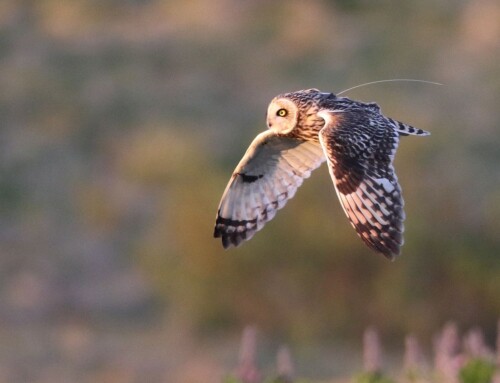LINKED PAPER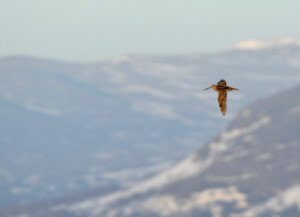 Solar heating may explain extreme diel flight altitude changes in migrating birds. Sjöberg, S., Andersson, A., Bäckman, J., Hansson, B., Malmiga, G., Tarka, M., Hasselquist, D., Lindström, Å., Alerstam T. 2023. Current Biology. DOI: 10.1016/j.cub.2023.08.035. VIEW
Solar heating may explain extreme diel flight altitude changes in migrating birds. Sjöberg, S., Andersson, A., Bäckman, J., Hansson, B., Malmiga, G., Tarka, M., Hasselquist, D., Lindström, Å., Alerstam T. 2023. Current Biology. DOI: 10.1016/j.cub.2023.08.035. VIEW
Recently we discovered a most unexpected and astonishing altitudinal flight behaviour in two different types of migratory birds, the Great Reed Warbler, and the Great Snipe. Previously, birds had been thought to preferably migrate below a few thousand meters and fly steadily at a given altitude. However, in our studies, when the birds conducted flights covering both day and nights, both species that otherwise are strictly nocturnal migrants, showed an unexpected pattern of flight altitude changes. At all diurnal flights the birds ascended 2000–4000 m higher than during night and flew at 5000–8000 m (Lindström et al. 2021; Sjöberg et al. 2021). So why did all these birds cruise at seemingly favourable altitudes for 10 hours at night, just to climb several thousand meters around sunrise?
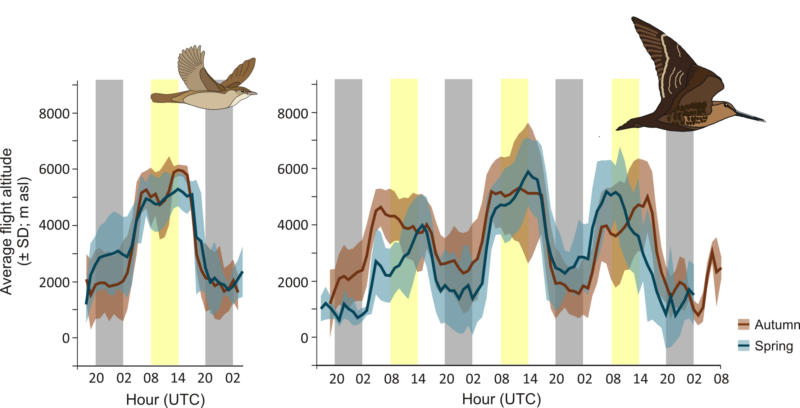
Figure 1. The diel cycle in flight altitudes in Great Reed Warblers (left) and Great Snipes (right).
Air temperature decreases with about 6.5°C for each km of increase in altitude. As far as the birds’ choice of flight altitude is concerned, it is noteworthy that there are no systematic changes in air temperatures between night and day. For example, the air temperature will be ~-20 °C at 5000 m asl at both day and night. Thus, if the air temperature at night was suitable for flight, they could have stayed there during the day. Instead, when the birds climb to their very high daytime flight altitudes, they consistently reach much colder air layers. In the previous studies, we proposed that the birds seek these high and cold altitudes to avoid being overheated from solar radiation which, during daytime flights, adds to the heat already produced through the hard work of constant flapping.
For the hypothesis to be valid, birds must get significantly heated by solar radiation during flight, which is not as obvious as one might think. When a bird is flying, the air flow around its body is equal to the flight speed of the bird (roughly 10-15 m/s), and previous studies on solar heating of birds sitting in sunlit cages indicate that the heating effect declines quickly with increasing wind speeds (e.g. Wolf and Walsberg 1996). Hence, we did not know if birds really get heated by solar radiation during flight. The miniaturized multisensor data loggers that we used (developed at Lund University) to describe the diel cycles in flight altitudes, also collected data on temperature. Therefore, we could in the new study use the same data set, to investigate whether the birds were exposed to additional body heating due to solar radiation during their diurnal flights.
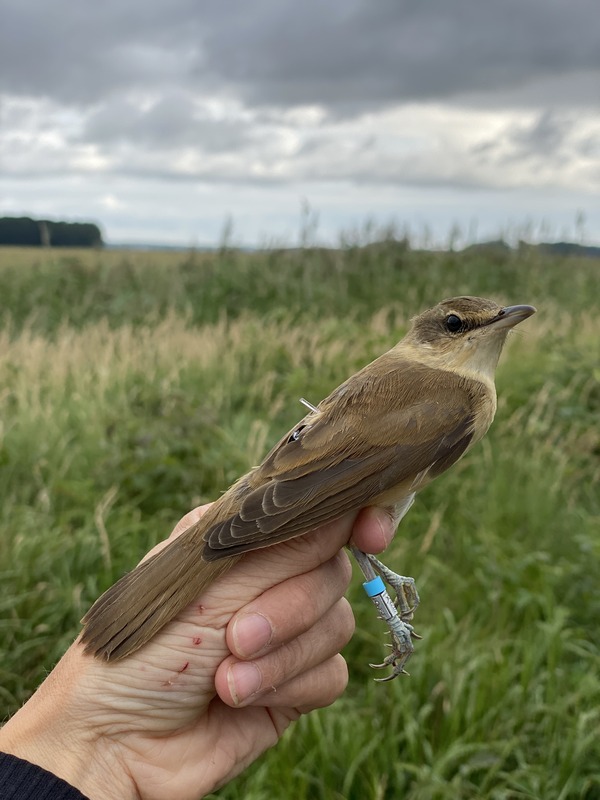
Figure 2. A Great Reed Warbler with a data logger © Sissel Sjöberg.
The two species had the loggers attached in different ways. The Great Reed Warbler had the logger on its back under thick layers of feathers. The Great Snipe had the logger on a leg ring on the tibia, partly covered by body feathers and tail coverts in flight (and the tail covering the logger from direct sun light). Thus, loggers registered the within-plumage temperature, affected by the radiated heat from the birds’ body and the surrounding air temperature. Clearly, in the Great Snipes the logger temperatures are more affected by surrounding air temperature due to the more exposed placement of the logger.
Importantly, if we only compare logger temperatures when the surrounding air temperature and the physical work of the birds were expected to be the same, the only factor that could affect the logger temperatures, is the added heating caused by solar radiation. Hence, to estimate the difference in within-plumage temperature between night and day flights, we analysed logger temperatures only when the birds were flying at the same altitudes. Then the surrounding air temperatures should be the same at night and day and the workload of the birds is expected to be the same during day and night.
The logger temperatures were negatively correlated to flight altitude both within night and day, illustrating that the loggers do not only measure body temperature but that they also are affected by surrounding air temperature. In addition, and as expected from the differences in attachment method between the species, the temperatures were overall lower in the great snipes compared to the great reed warblers, and they decreased more in relation to altitude. However, by comparing logger temperatures at the same altitudes we could conclude that the birds indeed are significantly warmer during daytime compared to night-time flights. And to us, in this comparison, the only factor that could cause this heating is solar radiation.
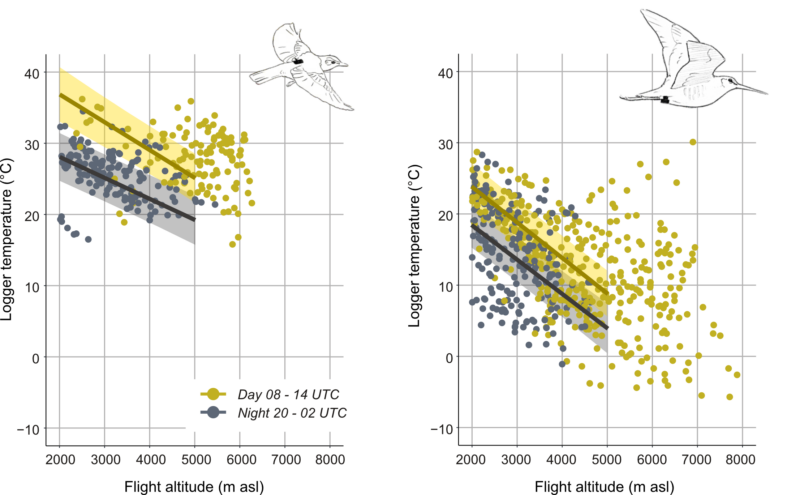
Figure 3. Both great reed warblers and great snipes were warmer during daytime compared to night-time flight.
The results are consistent with the predictions we had made if heating by solar radiation was a key factor forcing the birds to ascend to extremely high flight altitudes when continuing their migratory flights at daytime. However, our study does not provide data that can exclude other factors, such as avoiding predation or increasing visibility which may contribute to the patterns we have found. To further test our solar radiation heating hypothesis, we need experimental studies of birds flying in wind tunnels or to develop loggers that can provide measures of the air temperature and within-plumage temperature and the heating effect of the sun. In addition, we know that many more studies on altitudinal behaviour in migrants of various kinds are under way, and comparative analyses will most certainly increase our understanding of the importance and cause of these impressive altitude changes in migrants.
In the ancient Greek story, Icarus’ father used beeswax to glue feathers to Icarus’ arms and told him not to fly too high towards the sun as it would melt the beeswax. However, Icarus got hybris and ascended too close to the sun which melted the beeswax, and he therefore fell to his death. In contrast, our recent study suggests that migrating birds might instead experience an ‘inverted Icarus’ effect as they may instead avoid overheating from solar radiation by climbing to very high, and thus, very cold altitudes!
References
Lindström Å., Alerstam T., Andersson A., Bäckman J., Bahlenberg P., Bom R., Ekblom R., Klaassen R.H.G., Korniluk M., Sjöberg S., & Weber J.K.M. 2021. Extreme Altitude Changes between Night and Day during Marathon Flights of Great Snipes. Current Biology 31:15. VIEW
Sjöberg S., Malmiga G., Nord A., Andersson A., Bäckman J., Tarka M., Willemoes M., Thorup K., Hansson B., Alerstam T., & Hasselquist D. 2021. Extreme Altitudes during Diurnal Flights in a Nocturnal Songbird Migrant. Science 372:6542. VIEW
Wolf B.O., & Walsberg G.E. 1996. Thermal Effects of Radiation and Wind on a Small Bird and Implications for Microsite Selection. Ecology 77:7. VIEW
Image credit
Top right: Great Snipe in flight © Åke Lindström.




